세미나 공지사항
[WCU 16차 세미나] High Efficiency Dye-Sensitized Solar Cells based on Nanoelectrodes: From Glass to Flexible Substrate
1. Title : High Efficiency Dye-Sensitized Solar Cells based on Nanoelectrodes: From Glass to Flexible Substrate<?xml:namespace prefix = o ns = "urn:schemas-microsoft-com:office:office" />
2. Speaker : Ph.D. Min Jae Ko
(Solar Cell Center, Korea Institute of Science and Technology, KIST)
3. Date : May 17 (Mon), <?xml:namespace prefix = st1 ns = "urn:schemas-microsoft-com:office:smarttags" />5:00~6:15 P.M.
4. Venue : Building 302, Room 720
5. CV :
1991-1995 B.S. Fiber and Polymer Science, Seoul National University
1995-1997 M.S. Fiber and Polymer Science, Seoul National University
1997-2001 Ph.D. Materials Science and Engineering, Seoul National University
2001-2004 Postdoc, Chemical Engineering, M.I.T.
2005-2008 Senior Engineer, Samsung Electronics Co., LCD Business
2008- Senior Research Scientist, KIST
6. Abstract :
Over the last decade, dye-sensitized solar cell (DSSC) has attracted much attention due to the high solar-to-electricity conversion efficiency up to 10% as well as low cost compared with p-n junction photovoltaic devices. DSSC is composed of mesoporous TiO2 nanoparticle electrodes coated with photo-sensitized dye, the redox electrolyte and the metal counter electrode. The performances of DSSC are dependent on constituent materials and interface as well as device structure. Replacing the heavy glass substrate with plastic materials is crucial to enlarge DSSC applications for the competition with inorganic based thin film photovoltaic devices. One of the biggest problems with plastic substrates is their low-temperature tolerance, which makes sintering of the photoelectrode films impossible. Therefore, the most important step toward the low-temperature DSSC fabrication is how to enhance interparticle connection at the temperature lower than 150 oC. In this talk, the key issues for high efficiency plastic solar cells will be discussed, and several strategies for the improvement of interconnection of nanoparticles and bendability will also be proposed.
7. Contact : Prof. Kyusoon Shin (☏880-9386)

